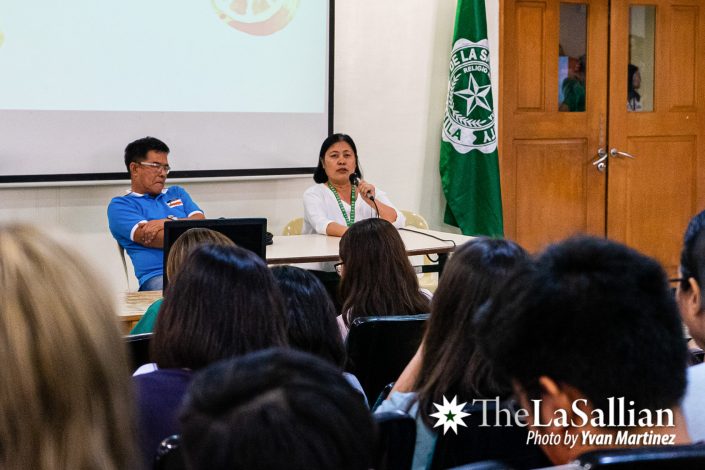Despite being touted as an agricultural country, the Philippines has continually struggled with achieving rice self-sufficiency for decades. Between 1986 to 2016, the country was only able to attain rice self-sufficiency for three years. More recently, a sharp surge in rice prices in 2018, due to an allegedly artificial rice shortage, limited Filipinos’ access to the much-needed staple.
The Duterte administration responded to the shortage by passing the Rice Liberalization and Tariffication Law (RTL). Since the enactment of the RTL in March, imported rice has continued to enter the Philippines with greater ease and at a cheaper cost, leaving farmers backed into a corner.
Breaking down the RTL
The RTL introduced multiple amendments to the Agricultural Tariffication Act of 1996. The most critical change concerns the removal of pre-existing quotas on rice imports in favor of tariffs. Provided that the necessary paperwork is secured and tariff payments are made, imported rice can be easily sold at markets.
The tariff revenues collected will be routed to the Rice Competitiveness Enhancement Fund (RCEF). For the next six years, P10-billion will be set aside annually for the RCEF. Half of the fund is set to go toward providing rice farm machineries and equipment for farmers. The remainder will be divided among research on rice seeds, provisions for a rice credit facility for farmers and cooperatives, and education-based initiatives.

Impact on the farmers, inflation rate
According to a report released by the United States Department of Agriculture, the Philippines is set to become the world’s leading importer of rice with total imports expected to reach a total of 3 million metric tons by the end of 2019. Although Malacañang claims to be concerned by this news, it has not shown any interest in amending or repealing the RTL. Rather, it has justified the increase in importation by claiming that there is a lack of proper irrigation systems in the country.
For farmers like Warlito Rupac, the RTL is an unwelcome solution. Rupac is one of many farmers in Nueva Ecija who are facing the effects of the law firsthand. Although he acknowledged the existing rice shortage confronting the nation, Rupac strongly opposes the implementation of relaxed regulations on rice importation. “Although mataas ‘yung bilis ng population increase natin, talagang tinatanggap namin na may shortage. Kaya lang, para hindi katanggap-tanggap na biglang unlimited rice importation ang sagot,” he explained.
(Although the population rate is steadily increasing, we accept that there is indeed a shortage. Nonetheless, it is hard to accept that unlimited rice importation is the answer.)
During Rice-ing Together: A KAMALAYAN Forum last November 15, Rupac lamented the government’s failure to reach out to farmers and other members of the farming industry prior to passing the RTL. He believed that had this been done beforehand, the RTL could have been formulated with more favorable outcomes for both rice producers and consumers alike.
Dr. Marites Tiongco, Dean of the School of Economics, offered an alternative perspective. Considering how importation led to an increase in rice supply, she explained that the subsequent decrease in the price of rice makes it more accessible for consumers. Tiongco also pointed to the inflation rate for the month of October, which dropped to 0.8 percent. “Probably, mayroon siyang contribution, but it is not 100 percent because of the RTL,” Tiongco clarified, referring to the inflation rate. “Noong bumaba ‘yung food inflation, bumaba na rin ‘yung total inflation rate.”
(The lowering of the total inflation rate succeeded the decrease of the food inflation.)
Additionally, Tiongco highlighted that rice importation increases economic competitiveness. According to her, international rice traders are deemed welcome because, “‘pag competitive ang isang market, hindi tataas masyado ‘yung price.”
(When a market is competitive, the prices will not increase too much.)
Calls for action
Considering the observed outcomes of the RTL, Rupac expressed his hopes that the government would work directly with farmers in the coming years. As the current chairman of the Provincial Cooperative Development Council and the Federation of Patriotic Farmers Cooperative of Nueva Ecija, he intends to use these associations and initiatives as an avenue for positive change in the agricultural system. “Kaya kami nagtayo ng kooperatiba dahil gusto naming maka-develop ng isang development system o strategy na nakabase talaga sa aming sariling kakayahan, sa aming sariling sitwasyon, [at] sa aming sariling mga problema.”
(We established a cooperative because we wanted to develop our own system or strategy toward progress that would be based on our own capabilities, our own situation, and our own struggles.)
Meanwhile, the University hopes to bolster its partnership with members of the agricultural sector. Following the conclusion of Rice-ing Together, a Memorandum of Agreement encompassing future initiatives involving research work, exposure trips, and improving producer-consumer relations for farmers was signed by Rupac and Vice President for Lasallian Mission Fritzie de Vera. The University Student Government (USG) has also undertaken the empowerment of farmers as one of its advocacies. Apart from co-organizing Rice-ing Together and a Farmers’ Market with the Center for Social Concern and Action, the USG, through the Legislative Assembly, released a manifesto calling for the Congress to “review, improve, and consider all the stakeholders of the Rice Tariffication Law, especially the farmers.”
